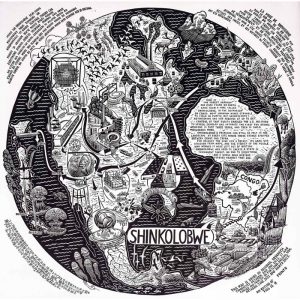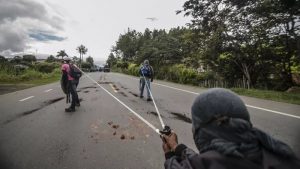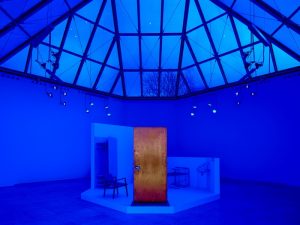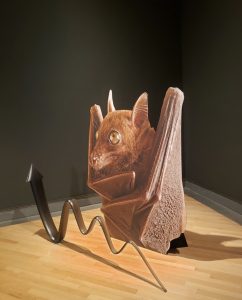There’s a mix pop art, cartoon aesthetics and ukiyo-e prints in the exhibition currently running at the Flomenhaft Gallery. But there’s also some dark pages from American history.
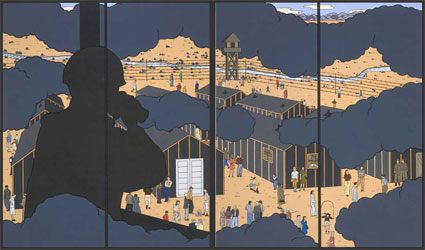 American Infamy #3
American Infamy #3
Born in Seattle in 1939, Roger Shimomura was two years old when he entered a Japanese American internment with his parents and relatives. Minidoka (Idaho) was one of ten hostile desert relocation centers. When Japan attacked the U.S. in the Pacific and World War II started, some 120,000 people of Japanese ancestry, 62% of whom were U.S. citizens, were regarded as suspects, spies and dangers no matter how long they had lived in the U.S. or how devoted they were to their adoptive country. It constituted the single largest forced relocation in U.S. history. Most of these camps/residences, gardens, and stock areas were placed on Native American reservations, for which the Native Americans were neither compensated nor consulted.
Roger was five when the Shimomura’s were permitted to return to Seattle.
 Custom Homes (Suite of 5 paintings), 2007
Custom Homes (Suite of 5 paintings), 2007
To create the Minidoka on My Mind series, Shimomura had to collect scraps of memories from the back of his brain, consult archives and get some help from the diaries of Toku, his grandmother. For 56 years, from the day she left Japan to come to America until she died, Toku meticulously described daily domestic tasks and weather conditions in succinct phrases, sometimes despairing but never expressing anger.
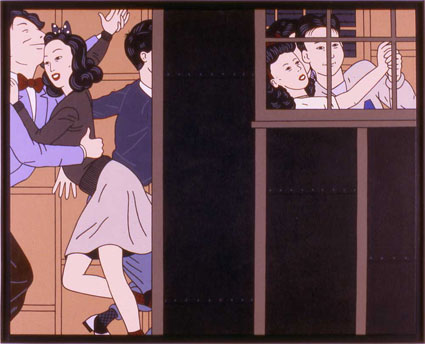 Block Dance, 2007
Block Dance, 2007
What makes the paintings striking is that the prisoners are dressed in what was (i guess) very fashionable in the U.S. at the time. Prisoners look very American, they do their best to get with a normal life while they are kept under constant watch by fellow (albeit whiter and carrying binoculars and machine gun) Americans.
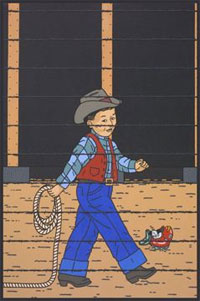 American Alien #4
American Alien #4
One painting, Not a J.A. (Japanese American) depicts a young guy called Ichiro playing baseball behind barbed wire. The Enemy #2 shows a young Japanese in traditional clothing smiling behind barbed wires. Block Dance shows a teenagers’ party, they dance and flirt but they are confined inside a stern barrack.
As a journalist of the Seattle PI commented, In an age of surveillance and a time of war, “Minidoka on My Mind” has relevance beyond its immediate subject. If you’re walking down a city street, chances are good some camera is tracking you. And no imagination is necessary to relate to the idea of a military operation hanging over daily life like a dark cloud or a term like “enemy alien” used to frighten people. Given the climate of xenophobia and suspicion that is taking Italy by storm these days (although in my personal experience there is nothing really new, being a foreigner in this country can definitely not be equaled to a long string of laughters), we need more works like Shimomura’s to remind us that fear might not always be the wisest adviser.
Image gallery, more pictures at Greg Kucera.
The exhibition runs until June 28 at the Flomenhaft Gallery, in Chelsea.

